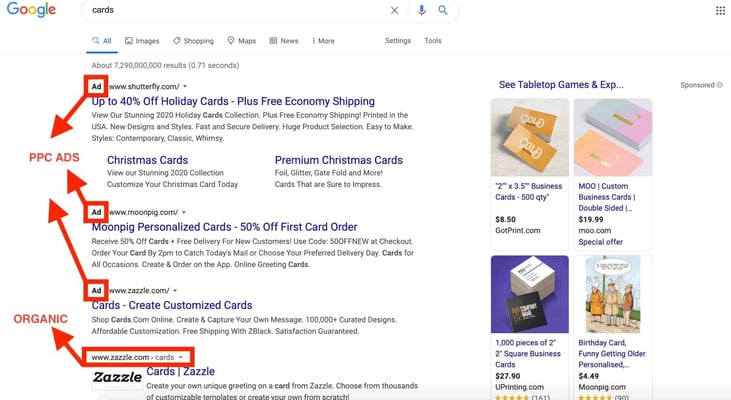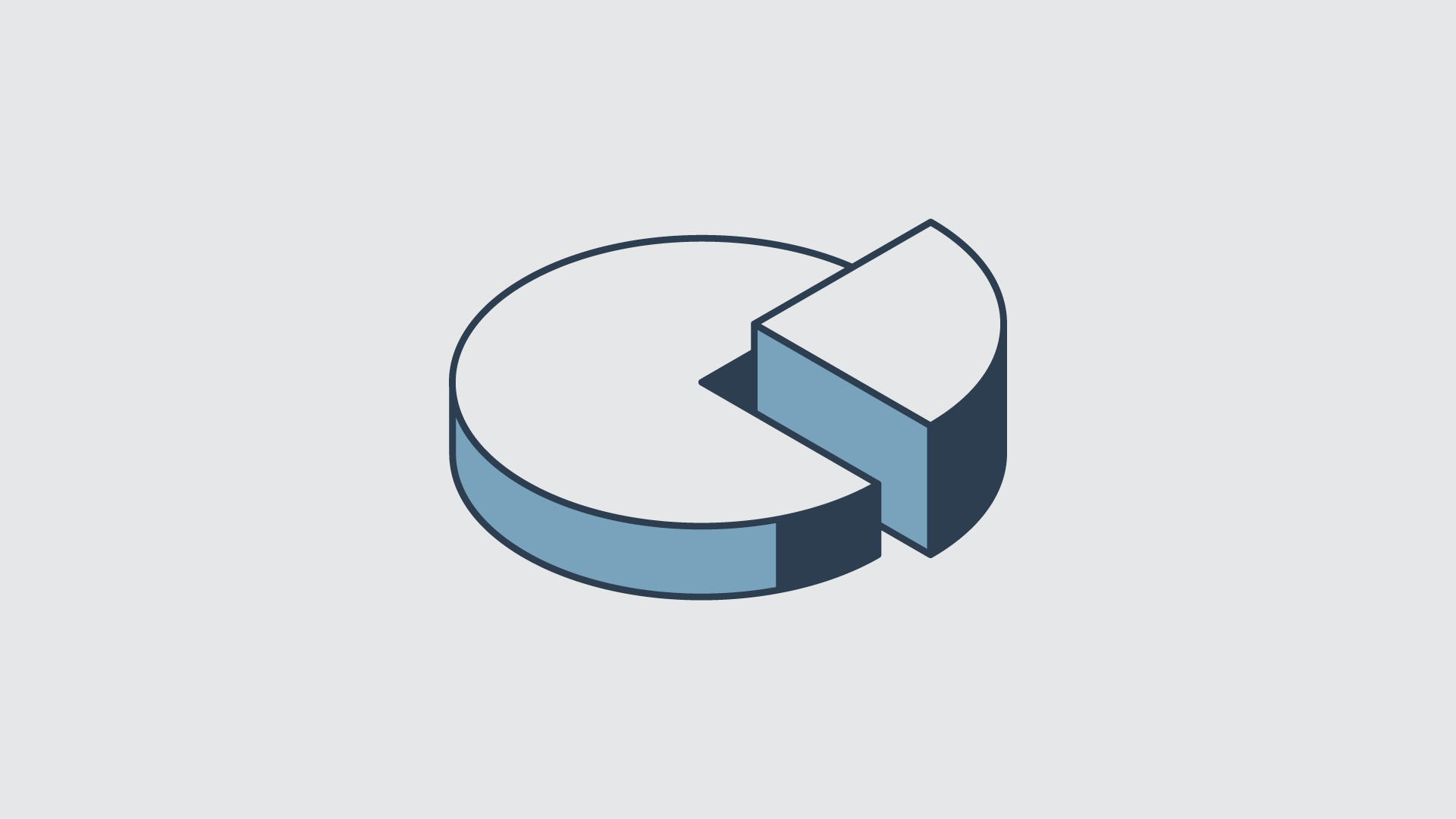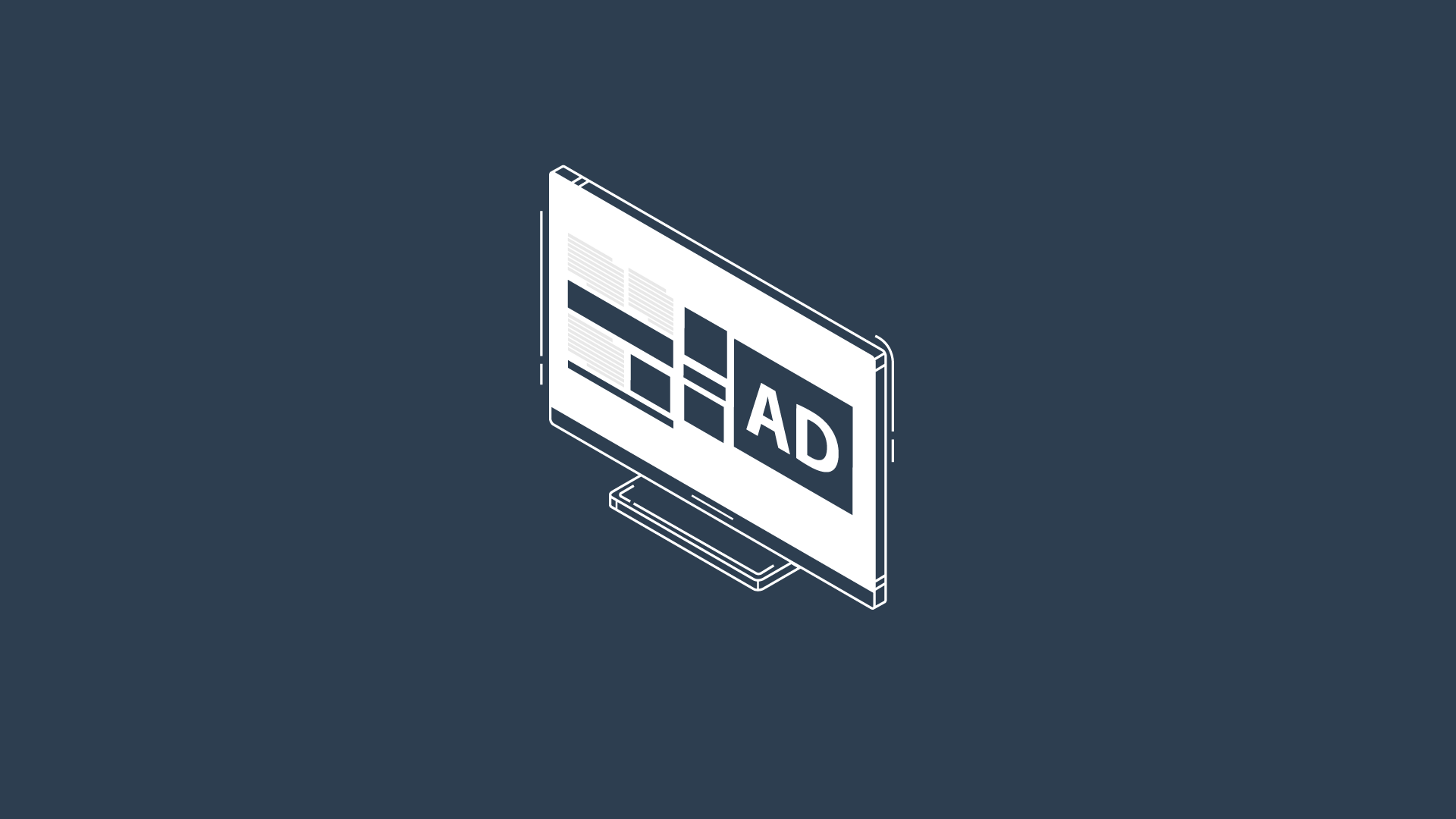Are you struggling to get the desired results from your PPC advertising campaigns? Are you tired of spending money on ads that don't convert into sales? The truth is, PPC advertising can be a powerful tool for driving traffic and increasing sales, but only if you know how to use it effectively.
According to recent statistics, PPC advertising generates an average of $2 in revenue for every $1 spent, offering an impressive return on investment (ROI) of 100%.
This means that for every dollar you invest in PPC advertising, you have the potential to double your revenue. These numbers speak volumes about the immense opportunities PPC presents for your business.
Throughout this comprehensive guide, we will explore the intricacies of PPC advertising and equip you with the knowledge and strategies needed to launch highly effective campaigns.
In this article, we will share some winning strategies for effective PPC advertising that will help you achieve your business goals and drive more sales.
|
Pay-Per-Click (PPC) Pay-per-click (PPC) is an online advertising model in which advertisers pay a fee each time their ad is clicked, typically used to drive traffic to websites and increase visibility in search engine results. |
What is PPC Advertising?
PPC advertising, or pay-per-click advertising, is a digital marketing strategy in which advertisers pay a fee each time their ad is clicked. It is a model that allows businesses to place their ads on various platforms, such as search engines and social media, and only pay when someone clicks on their ad.
This form of advertising offers a highly targeted approach, as ads are displayed to users who are actively searching for specific keywords or are within a defined target audience.
PPC advertising operates on an auction-based system, where advertisers bid on keywords or target audience demographics. When a user conducts a search or visits a website that matches the criteria set by the advertiser, the ad is displayed.
The position of the ad on the search engine results page or website is determined by factors such as the bid amount, ad quality, and relevance to the user's search query.

Benefits of PPC Advertising
Pay-per-click (PPC) advertising is a powerful tool for businesses looking to increase their online visibility and drive more traffic to their website. But what exactly are the benefits of using PPC advertising?
In this section, we'll explore the advantages of PPC advertising, including how it can help you reach your target audience, improve your ROI, and more. Let's dive in and discover the benefits of PPC advertising!
1. Immediate Visibility
Unlike organic search results, PPC ads offer instant visibility on search engine results pages, allowing businesses to quickly generate brand awareness and drive targeted traffic to their websites.
2. Targeted Reach
PPC advertising enables precise targeting based on keywords, demographics, location, interests, and more. This level of targeting ensures that ads are displayed to the most relevant audience, increasing the chances of attracting qualified leads.
3. Cost Control
With PPC advertising, marketers have full control over their budget. They can set daily or monthly caps to ensure they don't exceed their allocated advertising budget. Additionally, since advertisers only pay when someone clicks on their ad, they can monitor their return on investment (ROI) and adjust their campaigns accordingly.
4. Measurable Results
PPC advertising provides detailed metrics and analytics, allowing marketers to track the performance of their campaigns in real-time. Key metrics, such as click-through rate (CTR), conversion rate, and cost per conversion, provide valuable insights into the effectiveness of the campaigns and help optimize them for better results.
Effective PPC Advertising Strategies
In today's competitive digital landscape, implementing effective PPC advertising strategies is essential for marketing managers seeking to drive targeted traffic, increase brand visibility, and achieve optimal conversion rates.
With the right strategies in place, PPC campaigns can deliver outstanding results and contribute to the overall success of your marketing efforts.
In this section, we will explore a range of proven strategies that can help you maximize the impact and effectiveness of your PPC campaigns.
1. Selecting the Right PPC Platform
Choosing the right PPC platform is crucial to the success of your advertising campaigns. With various options available, it's important to evaluate each platform's features, targeting options, and reach to make an informed decision.
Firstly, consider the most popular PPC platforms like Google Ads, Bing Ads, and social media platforms such as Facebook and Instagram Ads. These platforms offer extensive reach and targeting capabilities, allowing you to reach your desired audience effectively.
Evaluate the features and functionalities offered by each platform. Look for advanced targeting options like demographics, interests, and behavior, as well as remarketing and ad retargeting capabilities. These features enable you to refine your audience targeting and deliver more relevant ads to potential customers.
Assess the platform's ability to segment and optimize your campaigns for maximum relevance and conversion potential.
2. Structuring Effective PPC Campaigns
Structuring your PPC campaigns in a well-organized and strategic manner is crucial for achieving optimal results. By carefully organizing your campaigns, ad groups, and keywords, you can improve your targeting, relevancy, and overall campaign performance.
Here are some key considerations for structuring effective PPC campaigns:
Organizing Campaigns and Ad Groups
Start by categorizing your campaigns based on different products, services, or marketing objectives. Within each campaign, create specific ad groups that focus on related keywords and themes. This allows for better control and customization of your ads and targeting.
Keyword Grouping and Segmentation
Group your keywords into tightly themed ad groups to ensure that your ads are relevant to the search queries. Use keyword research tools to identify related terms and variations that align with your campaign goals. By segmenting keywords effectively, you can deliver more targeted ads to your audience.
Implementing Ad Extensions and Formats
Take advantage of ad extensions to enhance the visibility and impact of your ads. Ad extensions provide additional information and options for users, such as call extensions, site links, and location extensions.
Experiment with different ad formats, such as text ads, image ads, or responsive ads, to determine which ones resonate best with your audience.
Optimizing Campaign Settings
Pay attention to campaign settings to ensure they align with your goals. Customize your ad delivery methods, ad scheduling, and geographic targeting to reach your desired audience at the right time and in the right locations.
Consider using ad scheduling to show your ads during peak hours or specific days when your target audience is most active.
Monitoring and Adjusting
Continuously monitor the performance of your campaigns and make necessary adjustments based on data insights. Regularly review key metrics such as click-through rates (CTRs), conversion rates, and cost per acquisition (CPA) to identify areas for improvement.
Test different ad variations, landing pages, and targeting options to optimize your campaigns for better results.
By structuring your PPC campaigns effectively, you can improve your ad relevance, targeting precision, and overall performance. Remember to monitor your campaigns closely and make data-driven optimizations to maximize their impact and return on investment.
3. Keyword Research and Optimization
Keyword research is a critical aspect of PPC advertising as it helps you identify the most relevant and high-performing keywords to target in your campaigns. Understanding your audience's search intent and behavior allows you to optimize your PPC strategy and reach them effectively.
Conduct comprehensive keyword research using keyword research tools to identify relevant keywords that align with your business offerings. Look for keywords with adequate search volume and moderate competition.
Consider long-tail keywords that are more specific and have higher intent, as they can often lead to better conversion rates.
Analyze keyword performance and relevance based on data from your campaigns. Adjust your keyword targeting strategy by adding new keywords, removing underperforming ones, and refining your keyword match types to improve ad targeting and reach.
Implement keyword optimization strategies such as bid adjustments, ad grouping, and ad copy optimization to maximize the effectiveness of your PPC campaigns. Regularly monitor keyword performance and make data-driven optimizations to enhance your campaign's reach and performance.
4. Creating Compelling Ad Copy
In PPC advertising, creating compelling ad copy is essential to capture your audience's attention and drive them to take action. Well-crafted ad copy can significantly impact your click-through rates and conversion rates.
Write attention-grabbing headlines and ad descriptions that highlight the unique selling propositions and benefits of your products or services. Use compelling language, persuasive messaging, and a clear call-to-action (CTA) to entice users to click on your ads.
A/B tests different ad variations to identify the most effective copy and messaging. Experiment with different headlines, descriptions, and CTA wording to find the combination that resonates best with your audience.
Continuously monitor and analyze the performance of your ad copy, making data-driven optimizations based on user engagement and conversion data. Refine your ad copy to improve its relevance, impact, and overall effectiveness.
By creating compelling ad copy, you can increase the click-through rates of your ads and drive more conversions, ultimately maximizing the success of your PPC campaigns.
5. Optimizing Landing Pages for Conversion
A crucial aspect of a successful PPC campaign is optimizing landing pages to maximize conversions. While driving traffic to your website is important, converting those visitors into customers is the ultimate goal.
By following these optimization strategies, you can create landing pages that engage visitors, encourage action, and ultimately increase your conversion rates:
Designing for User Experience
Start by ensuring that your landing pages have a clean and user-friendly design. Keep the layout simple, with clear navigation and intuitive functionality. Make sure the page loads quickly, as slow-loading pages can lead to higher bounce rates. Incorporate responsive design to ensure a seamless experience across different devices.
Crafting Compelling Headlines and Copy
Grab the attention of visitors with compelling headlines that highlight the unique value proposition of your offer. Craft persuasive copy that communicates the benefits and features of your product or service. Use concise and persuasive language to engage visitors and entice them to take action.
Clear and Persuasive Call-to-Action (CTA)
Place a clear and prominent call-to-action on your landing page. The CTA should be visually appealing, contrasting with the rest of the page, and convey the desired action, such as "Sign Up Now" or "Get Your Free Trial." Ensure that the CTA button is easily clickable and leads visitors to the desired conversion goal.
Testing and Optimization
Implement A/B testing to identify elements that drive better conversion rates. Test different variations of headlines, copy, CTA placement, and design elements to determine which combinations yield the highest conversions. Use data and analytics to make informed decisions about which elements to optimize further.
Building Trust and Credibility
Gain the trust of visitors by showcasing customer testimonials, reviews, or trust badges on your landing pages. Include trust-building elements, such as security certifications, privacy policies, or satisfaction guarantees. This helps instill confidence in visitors and increases their likelihood of converting.
Seamless Integration with PPC Ads
Ensure that there is a strong alignment between your PPC ads and landing page content. The messaging, keywords, and offers presented in your ads should be consistent with what visitors see on the landing page. This creates a seamless experience and reduces the chances of visitors bouncing or feeling misled.
By optimizing your landing pages for conversion, you can improve the user experience, increase engagement, and boost the conversion rates of your PPC campaigns.
6. Monitoring, Analysis, and Optimization
Monitoring, analyzing, and optimizing your PPC campaigns are essential for achieving optimal results and maximizing your return on investment (ROI).
By implementing effective monitoring and analysis strategies, you can gain valuable insights into the performance of your campaigns and make data-driven optimizations to improve their effectiveness.
Here are key steps to follow:
Tracking Key Performance Indicators (KPIs)
Identify the key metrics that align with your campaign goals. Common KPIs include click-through rates (CTR), conversion rates, cost per conversion, and return on ad spend (ROAS). Set up tracking mechanisms, such as conversion tracking and Google Analytics, to monitor and measure these metrics accurately.
Analyzing Campaign Data
Regularly review and analyze your campaign data to identify trends, patterns, and areas for improvement. Look for high-performing keywords, ad groups, or target audiences that drive better results. Conversely, identify underperforming elements that may require adjustments or optimizations.
Identifying Optimization Opportunities
Based on your analysis, pinpoint areas where you can optimize your campaigns. This may include adjusting keyword bids, refining ad targeting, or modifying ad copy. Use data-driven insights to make informed decisions about where to allocate your budget and resources for maximum impact.
A/B Testing
Implement A/B testing to compare different variations of your ads, landing pages, or other campaign elements. Test one variable at a time, such as headline, call-to-action, or images, and measure the impact on performance. This allows you to continuously refine and improve your campaigns based on real-time data.
Budget Allocation
Monitor your budget allocation to ensure optimal spending. Identify high-performing campaigns or keywords that generate a positive ROI and consider allocating more budget to them. Similarly, if certain campaigns or keywords are not delivering desired results, reallocate your budget to more promising areas.
Adapting to Market Changes
Stay informed about industry trends, competitor activities, and changes in user behavior that may impact your PPC campaigns. Regularly review your campaigns to ensure they remain relevant and aligned with the evolving landscape. Adjust your targeting, messaging, or bidding strategies as needed to stay ahead of the competition.
Continuous Refinement
Optimization is an ongoing process. Regularly monitor and evaluate the impact of your optimizations, making further adjustments as necessary. Keep a pulse on the performance of your campaigns, and be open to experimenting with new strategies to continuously improve your results.
By closely monitoring, analyzing, and optimizing your PPC campaigns, you can make data-driven decisions that improve their performance and drive better ROI.
Regularly review your campaign data, identify areas for improvement, and take proactive steps to optimize your targeting, messaging, and budget allocation. This iterative approach will help you maximize the effectiveness of your PPC campaigns and achieve your marketing goals.
7. Remarketing and Ad Retargeting Strategies
Remarketing and ad retargeting are powerful strategies that allow you to reconnect with potential customers who have already shown interest in your products or services. By targeting these individuals with personalized ads, you can increase brand awareness, engagement, and conversions.
Remarketing involves showing ads to users who have previously visited your website or interacted with your brand. It helps keep your brand top of mind and encourages users to return and complete desired actions. By placing a tracking pixel on your website, you can create remarketing lists based on specific user behaviors, such as visiting certain pages or adding items to a shopping cart.
Ad retargeting takes remarketing a step further by displaying ads to users as they browse other websites or platforms within an ad network. It extends your reach and keeps your brand visible to potential customers even when they're not directly engaging with your website.
To effectively leverage remarketing and ad retargeting:
Segment your audience
Divide your website visitors into different segments based on their behavior and interests. This allows you to create highly targeted ad campaigns tailored to each segment.
Create personalized ad content
Craft compelling and relevant ad content that speaks directly to the interests and needs of each audience segment. Use dynamic ads to automatically customize content based on user behavior.
Set frequency caps
Avoid bombarding users with excessive ads by setting frequency caps to limit the number of times an ad is shown to a particular user within a given time frame.
Optimize ad placements
Select the right ad placements across various websites and platforms to maximize visibility and reach. Consider using ad networks like Google Display Network or social media platforms for broader exposure.
Test and refine
Continuously monitor and analyze the performance of your remarketing and ad retargeting campaigns. Test different ad formats, messaging, and visuals to identify what resonates best with your audience. Optimize your campaigns based on the data and insights gathered.
Remarketing and ad retargeting can significantly boost your campaign's effectiveness by reaching users who are already familiar with your brand. By delivering personalized ads at the right time and in the right context, you can nurture these prospects and increase the likelihood of conversions.
8. Influencer Marketing and PPC
Influencer marketing has become a game-changer in the digital landscape, and when combined with PPC advertising, it can deliver exceptional results.
By collaborating with influential individuals who have a strong online presence and a loyal following, you can leverage their influence to enhance your PPC campaigns.
Influencer marketing involves identifying relevant influencers whose audience aligns with your target market. Look for influencers who have built credibility and trust among their followers. Establishing partnerships with influencers can involve sponsored content, product reviews, or affiliate collaborations.
Integrating influencer-generated content into your PPC campaigns can greatly amplify your reach and engagement. Consider featuring influencer testimonials, endorsements, or visuals in your ad copy or display ads.
By doing so, you leverage the influencer's reach to extend the visibility of your PPC campaigns and tap into their engaged audience.
Tracking and measuring the performance of your influencer marketing and PPC campaigns is crucial. Implement tracking mechanisms to monitor metrics such as click-through rates, conversions, and engagement.
This data will help you assess the effectiveness of your efforts and make data-driven optimizations to improve campaign performance.
Incorporating influencer marketing into your PPC strategy adds authenticity and credibility to your brand's messaging. By leveraging the influence of trusted individuals, you can enhance brand awareness, drive traffic to your website, and increase conversions.
9. Banner Ads and PPC
Banner ads play a significant role in PPC (Pay-Per-Click) advertising, offering marketers a visual and impactful way to engage their target audience. These display ads, typically placed on websites and online platforms, can effectively capture attention and drive traffic to your website or landing page.
Designing compelling and visually appealing banner ads is crucial for grabbing users' attention and enticing them to click. Use eye-catching imagery, concise and persuasive ad copy, and attention-grabbing headlines to create an impactful visual experience. Ensure that your banner ads align with your brand's messaging, style, and overall campaign objectives.
The placement of banner ads is a critical consideration for maximizing their effectiveness. Select websites and platforms that attract your target audience and align with your industry. Look for placements that offer high visibility and are likely to generate substantial traffic from your desired demographic.
A/B testing is an essential practice in optimizing the performance of your banner ads. Experiment with different designs, messaging, and placements to identify the most effective combinations.
Analyze key performance metrics such as click-through rates, conversions, and engagement to determine which variations yield the best results. Continuously iterate and refine your banner ads based on the insights gained from testing.
When integrating banner ads into your PPC campaigns, it is important to ensure a seamless user experience. Make sure that the landing page or destination URL users are directed to is relevant, visually appealing, and optimized for conversions. The landing page should provide a cohesive experience that aligns with the messaging and offers presented in the banner ads.
By incorporating well-designed banner ads into your PPC strategy, you can increase brand visibility, drive targeted traffic, and enhance the overall success of your campaigns. Effective banner ads have the potential to captivate your audience, generate clicks, and contribute to your marketing goals.
Adapting to Industry Trends and Best Practices
Staying ahead of the curve in the ever-evolving world of PPC advertising requires a keen understanding of industry trends and best practices. By keeping a finger on the pulse and adapting your strategies accordingly, you can optimize your campaigns for success.
Here are key considerations for staying up-to-date with industry trends and implementing best practices:
Continuous Learning and Education
Commit to ongoing learning and professional development in the field of PPC advertising. Stay updated with industry publications, blogs, and forums to gain insights into emerging trends, algorithm updates, and new features offered by PPC platforms.
Attend webinars, conferences, and training programs to deepen your knowledge and broaden your skill set.
Analyzing Successful Case Studies
Study successful PPC case studies to gain inspiration and learn from others' experiences. Analyze the strategies, tactics, and approaches employed by industry leaders and adapt them to your campaigns.
Identify the factors that contributed to their success and apply similar principles to your advertising efforts.
Experimentation and Testing
Embrace a culture of experimentation and testing within your PPC campaigns. Allocate a portion of your budget for testing new ideas, strategies, and ad formats.
Conduct A/B tests to compare different variations of your ads, landing pages, and targeting parameters. By systematically testing and analyzing the results, you can uncover valuable insights and make data-driven decisions.
Leveraging Automation and AI
Embrace the power of automation and artificial intelligence (AI) in your PPC campaigns. Take advantage of tools and platforms that offer automation features, such as bid management, ad scheduling, and audience targeting.
AI-powered algorithms can help optimize your campaigns by analyzing vast amounts of data and making real-time adjustments for maximum performance.
Mobile Optimization
With the increasing dominance of mobile devices, optimizing your PPC campaigns for mobile users is crucial. Ensure that your ads, landing pages, and website are mobile-friendly and provide a seamless user experience. Consider mobile-specific ad formats and features, such as click-to-call buttons and mobile app extensions, to enhance engagement and conversions.
Adapting to Algorithm Changes
PPC platforms regularly update their algorithms and policies, impacting campaign performance and strategies. Stay informed about these changes and adapt your campaigns accordingly.
Monitor platform announcements, support forums, and industry news to understand how algorithm updates may affect your ads' visibility, targeting options, or bidding strategies.
Collaboration and Knowledge Sharing
Engage with PPC communities and industry professionals to exchange knowledge, insights, and best practices. Participate in online forums, social media groups, and professional networks dedicated to PPC advertising.
Share your experiences, ask questions, and learn from others' perspectives. Collaboration fosters a supportive environment where marketers can collectively stay at the forefront of industry trends.
By proactively adapting to industry trends and implementing best practices, you can optimize your PPC campaigns for better performance and ROI. Stay informed, experiment with new strategies, and leverage automation and AI to streamline your processes.
Build a comprehensive PPC strategy
An effective PPC advertising strategy is essential for a marketing manager who strives to drive targeted traffic, generate leads, and achieve business growth.
By incorporating PPC advertising into your marketing strategy, you can adjust and optimize your campaigns in real-time allowing for continuous improvement and better return on investment.
Building a comprehensive PPC strategy requires careful planning, continuous monitoring, and data-driven optimization. It involves understanding your target audience, conducting thorough keyword research, creating compelling ad copy, optimizing landing pages for conversion, and making data-driven decisions to improve performance.
At Fine Media, we specialize in developing and executing highly effective PPC advertising strategies tailored to your business goals.
Our team of experts can help you navigate the complexities of PPC, optimize your campaigns, and achieve exceptional results. Contact us today to unlock the true potential of PPC advertising and drive unparalleled growth for your business.



